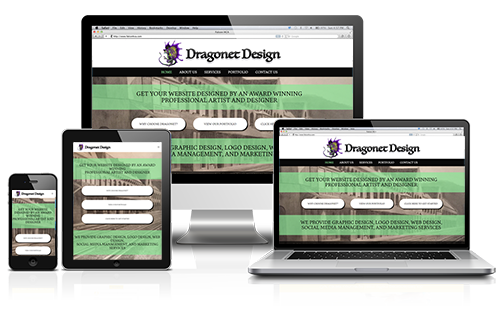In today’s interconnected world, website security is a paramount concern for businesses and individuals alike. At Dragonet Design, we understand that a secure online presence is not just a luxury but a necessity. In this comprehensive guide, we’ll walk you through the ABCs of website security, covering essential tips, best practices, the importance of SSL certificates, and effective measures to safeguard your digital fortress against cyber threats.
A – Assess Your Risks:
Before fortifying your website’s defenses, it’s crucial to assess potential risks. Identify sensitive areas and data susceptible to cyber threats. This includes customer information, payment gateways, and any other confidential data. Understanding your vulnerabilities lays the foundation for a robust security strategy.
B – Best Practices for Website Security:
Implementing best practices is fundamental to securing your online presence. Regularly update your website’s software, plugins, and themes to patch vulnerabilities. Enforce strong password policies, and limit user access to only essential personnel. Back up your data regularly to mitigate the impact of potential breaches.
C – Choose HTTPS with SSL Certificates:
One of the cornerstones of website security is the use of Hypertext Transfer Protocol Secure (HTTPS) with SSL certificates. An SSL certificate encrypts data transferred between the user’s browser and the website, ensuring a secure connection. At Dragonet Design, we emphasize the importance of HTTPS not only for security but also for search engine optimization (SEO) benefits.
D – Defend Against Cyber Threats:
Cyber threats are ever-evolving, making it imperative to implement robust defense mechanisms. Invest in a reputable firewall to monitor and filter incoming traffic. Implement a Web Application Firewall (WAF) to protect against common web application attacks. Regularly scan your website for vulnerabilities using security tools.
E – Educate Your Team and Users:
Human error is often a significant factor in security breaches. Educate your team and users about the importance of security protocols. Train staff to recognize phishing attempts and adopt safe browsing habits. Keeping everyone in the loop enhances overall security awareness.
F – Frequently Monitor and Update:
Cybersecurity is an ongoing process, not a one-time event. Regularly monitor your website’s security logs for suspicious activities. Stay informed about the latest security threats and update your security measures accordingly. Consistent monitoring and updates are the keys to staying one step ahead of potential risks.
G – Guard Your Server and Website:
Harden your server and website by implementing strict security configurations. Remove unnecessary functionalities and features that could pose security risks. Utilize security headers and protocols to enhance the overall security posture of your website.
At Dragonet Design, we believe that a secure website is the cornerstone of a successful online presence. By following the Tips: The ABCs of website security guide and adopting a proactive mindset, you can create a robust defense against cyber threats. Protect your digital investments and user trust with a security strategy that leaves no stone unturned. For more website insights visit Dragon Design’s blog page.




